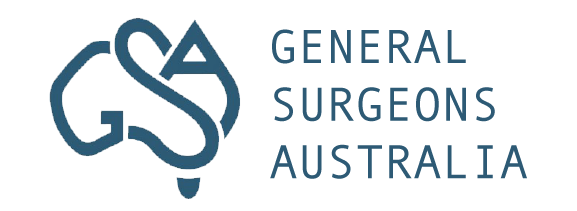Oncoplastic Surgery
What is Oncoplastic Surgery?
Oncoplastic surgery is a specialised field of breast cancer surgery that combines oncological and plastic surgery techniques. The primary goal of oncoplastic surgery is to remove the cancerous tumour while simultaneously preserving the appearance of the breast. This approach not only focuses on effectively treating breast cancer but also aims to maintain or improve the cosmetic outcome after surgery.
Who is Suitable for Oncoplastic Surgery?
Oncoplastic surgery suits patients who meet certain criteria, focusing on medical and aesthetic considerations. Here are the primary factors that determine suitability:
- Type and Stage of Breast Cancer: Suitable for patients with early-stage breast cancer where the tumour is localised and can be removed with clear margins. Patients with larger tumours relative to the size of their breasts may also benefit, as oncoplastic surgery can provide more options for tissue rearrangement.
- Location of the Tumour: Tumours located in parts of the breast where removal could lead to significant cosmetic deformity are often ideal candidates for oncoplastic techniques.
- Breast Size and Shape: Patients with sufficient breast tissue that allows for reshaping post-tumour removal may achieve better outcomes. However, techniques can be adapted for various breast sizes.
- Patient's Health and Medical History: Good overall health and no serious comorbid conditions that might complicate surgery or anaesthesia are crucial. A thorough evaluation of the patient’s medical history and current health status is essential.
- Patient's Personal Preferences: It is important to consider the patient’s expectations and preferences regarding breast appearance after surgery. Patients who place a high value on the cosmetic outcome post-cancer treatment are typically more interested in oncoplastic surgery.
- Willingness to Undergo Possibly Lengthier Surgery and Recovery: Oncoplastic surgery can often take longer than traditional breast cancer surgeries due to the complexity of the procedures involved. Patients must be prepared for a potentially longer recovery period and possible additional surgeries for final adjustments.
Benefits of Oncoplastic Surgery
- Improved Cosmetic Outcomes: By integrating plastic surgery techniques with cancer removal, oncoplastic surgery aims to leave the breast looking as natural as possible. This can significantly improve patient satisfaction with their body image post-surgery.
- Higher Precision in Removing Cancer: The approach allows surgeons to remove more tissue around the tumour, potentially decreasing the likelihood of cancer recurrence since wider margins can be achieved without compromising the breast's appearance.
- One-Stage Procedure: Cancer removal and breast reconstruction are performed simultaneously, which can reduce the overall number of surgeries and anaesthesia exposures compared to having separate procedures for removal and reconstruction.
- Psychological and Emotional Benefits: Patients often experience less psychological distress and a better quality of life post-surgery, as the preservation of their body image can help reduce the emotional impact of breast cancer surgery.
- Adaptability to Patient Needs: Techniques can be adjusted based on the size and location of the tumour and the patient's body type, ensuring a tailored approach to both cancer treatment and cosmetic outcome.
Types of Oncoplastic Surgery
Oncoplastic surgery can be divided into two broad categories based on the extent of tissue involvement and the reconstruction techniques used:
- Volume Displacement Techniques: These are suitable for smaller tumours and involve reshaping the remaining breast tissue after tumour removal. Techniques such as breast lifts (mastopexy) or reductions are employed to fill the defect left by the tumour removal.
- Volume Replacement Techniques: Used when a significant portion of breast tissue is removed, which could lead to a noticeable deformity. This approach involves replacing the lost tissue with tissue from another part of the patient's body (like the back, abdomen, or buttocks) or using implants.
Alternative Options to Oncoplastic Surgery
For patients who might not choose or be suitable for oncoplastic surgery, there are several alternative options:
- Traditional Lumpectomy or Mastectomy: These are standard breast cancer surgeries where the focus is primarily on removing all cancerous tissue rather than aesthetic outcomes. Reconstruction, if desired, is usually planned as a separate procedure after cancer treatment.
- Breast Reconstruction Post-Mastectomy: For those undergoing a mastectomy without immediate reconstruction, breast reconstruction can be performed as a separate procedure after the patient has recovered from the mastectomy and completed any additional treatments like chemotherapy or radiation.
- Non-Surgical Treatments: Depending on the stage and type of breast cancer, some patients might opt for or require treatments like radiation therapy, chemotherapy, or hormone therapy either instead of or in addition to surgery.
- Aesthetic Refinement Post-Surgery: Patients who have had traditional surgery and are dissatisfied with the cosmetic outcomes may consider cosmetic procedures such as fat grafting or breast implants at a later time to improve the appearance of their breasts.
Preparation Before an Oncoplastic Surgery
- Medical Evaluations: Comprehensive assessments, including blood tests, imaging studies (like mammograms and MRIs), and possibly heart and lung function tests to ensure you are fit for surgery.
- Consultations: Meetings with the surgical oncologist and the plastic surgeon to discuss the details of the surgery, understand the risks and benefits, and set realistic expectations for the outcomes.
- Medication Review: Discuss current medications with the surgeon to identify any that need to be paused or adjusted before surgery, such as blood thinners or supplements that could affect bleeding risk.
- Smoking Cessation: Patients who smoke will be advised to stop well in advance of surgery to improve healing and reduce complications.
- Arranging Support: Organizing for help at home during the recovery period, including assistance with daily activities and transportation, as you will have activity restrictions post-surgery.
- Preoperative Instructions: Typically, this includes fasting instructions (no food or drink after midnight before the surgery) and guidelines on bathing or using special antiseptic soap to reduce the risk of infection.
Oncoplastic Surgery Procedure
- Anaesthesia: The surgery is performed under general anaesthesia, so you will fall asleep.
- Cancer Removal: The surgeon removes the tumour and a margin of healthy tissue to ensure all cancerous cells are effectively removed.
- Reconstruction: Immediately following the removal of the tumour, the plastic surgeon reshapes the breast using either the remaining breast tissue or additional material, such as tissue from another part of your body or synthetic implants.
- Symmetry Adjustments: If only one breast is affected, a lift, augmentation, or reduction might be performed on the opposite breast to achieve symmetry.
- Closure: Incisions are closed with sutures, and drains may be placed to remove excess fluids. Bandages and a special surgical bra are applied.
Oncoplastic Surgery Recovery Plan
- Activity Restrictions: Avoid strenuous activities and heavy lifting for several weeks, gradually increasing your activities as your surgeon recommends.
- Physical Therapy: Engaging in guided exercises to regain mobility and strength without compromising the surgical site.
- Emotional Support: Recovery can be emotionally taxing. Support groups or counselling can be beneficial.
- Monitoring for Long-term Effects: Continued monitoring for any changes in breast tissue or signs of cancer recurrence as part of regular cancer follow-up care.
- Nutritional Support: A balanced diet rich in vitamins and minerals to support healing.
Oncoplastic Surgery Prognosis
The prognosis following oncoplastic surgery is generally positive, particularly when it involves early-stage breast cancer. The primary goals of the surgery — effective cancer treatment combined with aesthetic preservation — are typically well-achieved. Key factors influencing the prognosis include:
- Cancer Stage and Type: Early detection and treatment generally result in better outcomes. The specific characteristics of the cancer, such as hormone receptor status and HER2 status, also play a crucial role.
- Margins of Resection: Achieving clear margins, where no cancer cells are found at the edge of the removed tissue, is a critical factor in reducing the risk of recurrence.
- Patient Health: Overall health, including other medical conditions, can affect recovery and long-term outcomes.
- Adherence to Treatment Plan: Following up with recommended treatments such as radiation therapy, chemotherapy, or hormone therapy (if needed) post-surgery is crucial for the best prognosis.
Oncoplastic Surgery Risks
- Infection and Bleeding: As with any surgical procedure, there is a risk of infection at the incision sites or internal bleeding.
- Anaesthetic Complications: Reactions to anaesthesia, although rare, can occur and range from mild to severe.
- Asymmetry and Cosmetic Issues: Despite the goal of improving aesthetic outcomes, there can be issues with asymmetry between the breasts, dissatisfaction with the cosmetic results, or the need for additional surgeries to adjust the shape or size of the breast.
- Changes in Sensation: There may be temporary or permanent changes in breast or nipple sensation.
- Delayed Wound Healing: Especially in patients who are smokers, obese, or have diabetes, wound healing may be slower.
- Recurrence of Cancer: While oncoplastic surgery aims to remove all cancerous tissue, there is always a risk of cancer recurrence.
What if Oncoplastic Surgery is Delayed?
The most significant risk of delaying surgery is the potential for the cancer to progress to a more advanced stage, which can limit treatment options and adversely affect the prognosis. If cancer progresses, achieving desirable cosmetic results can become more challenging due to the need for more extensive tissue removal.









